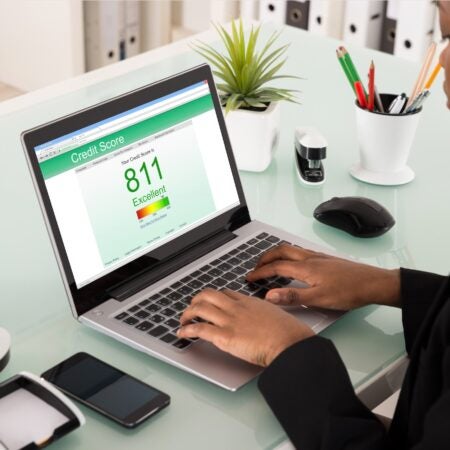
To understand the difference between these two popular credit options, it’s probably most helpful to first determine how they are alike. Then, the differences will make more sense.
How are home equity loans and home equity lines of credit alike?
A home equity loan (HEL) and a home equity line of credit (HELOC) are similar in many ways:
Both are limited to the amount of equity you have in your home
As their names imply, both HELs and HELOCs are based on the equity you’ve earned in your home.
Equity is the difference between the current market value of your house and what you still owe on your mortgage. Since the lion’s share of each month’s mortgage payment goes toward interest early on in the repayment schedule, most homeowners haven’t accumulated much in the way of equity until they’ve been in their homes for several years. (The exception being a sudden and dramatic rise in real estate values in the neighborhood.)
To illustrate, if you owe $180,000 on a home with a market value of $200,000, you own $20,000 of equity in that house. The maximum HEL or HELOC you qualify to receive would be whatever portion of that amount your lender agrees to consider. (In most cases, that maximum is 85 percent of the total equity, or $17,000 in our example.)
Essentially, the bank considers a HEL or HELOC as a “second mortgage” on that portion of the home’s value. They are both, therefore, secured loans because the bank would be able to foreclose and confiscate the home if you were to default on either your mortgage or your home equity product.
Both extract value from your home
The opposite side of the same coin is the fact that borrowing out of your equity means you no longer have that equity.
Continuing with the same example from above, if you were to take out a home equity loan for $17,000, and then turn around and sell the home the next day for its full value of $200,000, you would be left with just $3,000 in profit rather than the $20,000 you’d earned over the years you owned the house.
So, logically, if you know you plan to sell the home in the near future, or you have any reason to be concerned that the home’s value is likely to drop, you may not want to move ahead with a home equity loan or line of credit.
Both are forms of debt
Finally, it’s important to realize that HELs and HELOCs are both considered debts, just like your mortgage or car payment. Although they’re provided based on equity you’ve previously earned paying for your home, you’re still incurring a debt that will appear on your credit report.
As a result, they’re both going to impact your debt-to-income and debt utilization ratios.
Your debt utilization ratio (the amount of credit you owe compared to the total amount available to you) has a significant impact on your credit score. The more available credit, the better. Your debt-to-income ratio (the minimum amount you must pay towards your debt each month compared to your monthly income) does not directly affect credit score, but it is a factor when applying for future loans.
And, as with all debt, you’ll be paying both products back with interest. So, even though you’re technically borrowing money you’ve already earned, you’re going to have to pay more for it.
How are HELs and HELOCs different?
With all of the above established, it’s easier to focus on the few ways in which these two similar products differ from each other:
Loan vs. line of credit
The greatest difference between HELs and HELOCs is right there in their name:
- Home equity loan
- Home equity line of credit
A home equity loan is an installment loan: a lump sum that you borrow from the lender and subsequently pay back based on a regular monthly payment schedule. While you can choose to borrow the full value of your equity, you don’t have to do so, and the amount you need to pay back will not change.
A home equity line of credit, on the other hand, is a revolving credit line very similar to a credit card. It has a maximum credit limit equal to the equity you’ve earned, but you owe nothing until you actually use it to make a purchase. And, as you pay the debt off, you can continue borrowing up to that maximum. So, your monthly payment and the total equity you’ve extracted from your home’s value are both within your control.
Interest rates
HELs will usually require a higher interest rate than a first mortgage, even from the same lender. However, the interest rates are fixed, meaning you can reliably predict what you are going to owe each month on the loan until it is paid off.
HELOCs, on the other hand, usually include an adjustable interest rate that’s tied to some outside metric, such as the prime lending rate. While that rate could be lower than a HEL at the outset, it could also rise far higher if interest rates skyrocket at any point during the life of the line of credit. As a result, your monthly payment could get higher even if you don’t borrow any more of the credit line.
Additional costs
Like other loan products, HELs require an origination or administrative fee to process, as well as standard closing costs similar to what’s required to obtain a first mortgage on a new property. These may include a home appraisal, application fee, title search, and attorney’s fees.
HELOCs will not usually require all the same closing costs, but may instead include annual fees, transaction fees, discount fees, and a higher number of potential penalties for early or late payments.
Which is the better choice? HEL or HELOC?
There’s no definite right answer to that question.
If you need a large lump sum of money soon, and you have the equity in your house to cover what you need, a home equity loan is a good choice. Many homeowners use a HEL to consolidate other higher interest debts, pay for a large home improvement project, or to cover a daughter’s wedding.
If you want ready access to cash, but only need to dip into it now and then, a home equity line of credit may be better. Parents who are helping their children cover college tuition may use a HELOC to pay the bill each semester, then pay it over the following months. A long list of smaller home improvement projects that will span years would also be a good use for a HELOC.
Work with your lender and/or accountant to discuss all the factors that may play into your decision. That way, you can be sure you’re choosing the home equity product that’s best for your needs.
If you’re looking into purchasing a home, but are concerned about your credit, learn about our more credit repair services.
You can also carry on the conversation on our social media platforms. Like and follow us on Facebook and leave us a tweet on Twitter.






